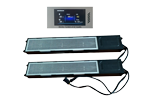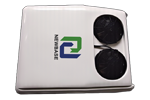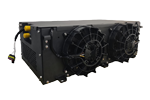In today's world, the automotive industry is undergoing a significant transformation driven by the need for energy conservation and emission reduction. New Energy Vehicles (NEVs), powered by renewable energy sources, are increasingly replacing traditional fossil fuel vehicles. Lithium-ion batteries (LIBs) have emerged as the most promising energy storage devices for NEVs, including both Hybrid Electric Vehicles (HEVs) and Battery Electric Vehicles (BEVs), due to their high energy/power density, long cycle life, and environmental friendliness.
Challenges in NEV Commercialization
The fundamental challenge in the commercialization of NEVs is the development of suitable energy storage devices capable of delivering high power and energy. To meet the stringent power and energy requirements of NEVs, LIBs are often configured in series and parallel to form modules and battery packs. These batteries are particularly sensitive to pressure, vibration, and temperature, with temperature having a significant impact on their performance.
Temperature Management in LIBs
Temperature management is crucial for LIBs. Low temperatures can reduce the power and energy output of LIBs, while high temperatures can lead to complex side reactions, potentially causing thermal runaway (TR) under extreme conditions. Uneven temperature distribution within the battery system can result in different electrochemical behaviors and cell imbalance, severely affecting the performance of NEVs.
Battery Thermal Management Systems (BTMS)
To address these challenges, a reliable and efficient BTMS is essential to maintain the battery temperature within the specified range for NEVs. An ideal BTMS should be able to regulate the battery pack to the optimal temperature with minimal added weight and cost. Current research on BTMS can be categorized into active or passive, series or parallel, heating or cooling, air or water or phase change material (PCM), and hybrid strategies combining multiple methods. The design of BTMS has a significant impact on the cost, heat transfer, energy management, battery health, and energy density of the battery system.
Future Directions and Design Guidance
As the demand for faster charging and longer range increases, the importance of BTMS will grow. This article aims to provide design guidance for efficient BTMS for high-energy-density LIBs in NEVs. We discuss the impact of temperature on individual cells and battery system performance, focusing on research advancements in air cooling, liquid cooling, and PCM-based cooling systems, and summarizing the advantages and disadvantages of these methods. Additionally, we explore the integration of BTMS with vehicle thermal management (VTM) and discuss the challenges and future prospects of BTMS capable of preventing thermal runaway.
Industry Standards and Market Trends
The "Lithium-ion Battery Industry Specification Conditions (2021)" have been established to guide companies to reduce manufacturing projects that simply expand production capacity, strengthen technological innovation, improve product quality, and reduce production costs. Companies are encouraged to adopt advanced, energy-saving, environmentally friendly, safe, and highly intelligent production processes and equipment. The product performance requirements for batteries and battery packs include monitoring the uniformity of the electrode after coating, controlling the water content during the drying process, and detecting internal short-circuit high-voltage tests (HI-POT) after battery assembly.ortation.
Conclusion
Lithium-ion batteries are a critical component in the transition to sustainable transportation. With ongoing innovations in materials science, battery management systems, and fast-charging technologies, LIBs are becoming more efficient and safer. As the market for NEVs continues to grow, the development of advanced BTMS will be crucial in ensuring the performance and safety of these vehicles. We are committed to providing cutting-edge solutions to meet the evolving needs of the automotive industry.









.png)






